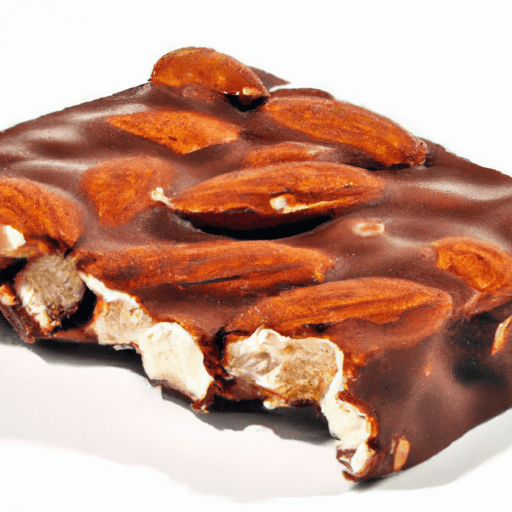Almond Joy Candy Bar: A Delicious Coconut Treat
If you have a sweet tooth and a love for coconut, then the Almond Joy candy bar is a treat that deserves a place in your pantry. With its combination of smooth milk chocolate, creamy coconut filling, and crunchy almonds, this iconic candy bar is sure to delight your taste buds. In this blog post, we’ll take a closer look at the Almond Joy candy bar and explore its taste, common uses in cooking, nutritional value, and some interesting history and facts.
Taste and Texture
The Almond Joy candy bar is a perfect balance of flavors and textures. As soon as you take a bite, you are greeted with a rich and velvety milk chocolate coating that gives way to a luscious coconut filling. The coconut center is smooth, creamy, and sweet, providing a tropical escape with every bite. To add a delightful crunch, whole almonds are strategically placed on top of the coconut layer, offering a pleasant contrast to the soft and chewy texture. The combination of chocolate, coconut, and almonds creates a harmonious blend that is simply irresistible.
Common Uses in Cooking
Beyond being a beloved candy bar enjoyed on its own, the Almond Joy also serves as a versatile ingredient in many sweet recipes. Its distinct coconut and chocolate flavors can be incorporated into a variety of desserts, including cakes, cookies, brownies, and ice cream. The candy bars can be chopped or melted down and used as a mix-in or topping, adding a delightful surprise to your favorite treats. You can even experiment with making homemade versions of Almond Joy-inspired desserts to customize the flavor and texture to your liking.
Nutritional Value
While the Almond Joy candy bar is undeniably delicious, it’s important to be mindful of its nutritional content. Each standard-sized bar contains approximately 220 calories, making it a treat best enjoyed in moderation. This delightful candy bar also contains healthy fats from almonds and natural sweetness from coconut, which can provide some nutritional benefits. Additionally, almonds are a good source of vitamin E, magnesium, and fiber. However, it’s worth noting that Almond Joy candy bars do contain added sugars and preservatives, so it’s always wise to read the label and be mindful of your overall intake.
A Brief History and Fun Facts
The Almond Joy candy bar has a rich history that dates back to 1946 when it was first introduced by the Peter Paul Candy Manufacturing Company. Its sister bar, Mounds, which is similar but without the almonds, was actually introduced earlier in 1920. Both bars gained popularity quickly and have been enjoyed by generations of candy enthusiasts ever since.
Interestingly, the original Almond Joy bar did not feature a whole almond on top; instead, it had chopped almonds mixed into the coconut filling. It was not until 2006 that Hershey’s, the present-day manufacturer, made the decision to add a whole almond, creating the iconic look we know today.
The Almond Joy candy bar has also become an integral part of pop culture. It has been featured in movies, TV shows, and commercials, further solidifying its status as a classic treat.
The Almond Joy candy bar is a delightful indulgence that brings together the tropical flavors of coconut, the rich smoothness of chocolate, and the satisfying crunch of almonds. Its versatility in cooking provides an opportunity to explore various dessert recipes, while its nutritional value reminds us to enjoy it in moderation. With its fascinating history and iconic presence in pop culture, the Almond Joy candy bar continues to bring joy and satisfaction to fans worldwide. So go ahead, treat yourself to a moment of bliss with this coconut-filled delight!
Almond Joy Candy Bar
Origin: The Almond Joy candy bar was first introduced by the U.S. candy manufacturer Peter Paul Candy Manufacturing Co. in 1946.
Ingredients: The classic Almond Joy candy bar consists of a creamy coconut filling covered in milk chocolate, with a whole almond nestled on top. The coconut filling is made with sweetened coconut, corn syrup, and partially hydrogenated vegetable oil.
Common Uses: Almond Joy is primarily enjoyed as a sweet, indulgent treat. It is often eaten as a standalone candy bar or used in desserts such as cookies, cakes, and ice cream.
Nutritional Benefits: Almond Joy candy bars are a source of carbohydrates, fats, and sugars. They also contain small amounts of dietary fiber, protein, and various vitamins and minerals. However, due to their high sugar and calorie content, they should be consumed in moderation as part of a balanced diet.
Unique Properties: Almond Joy’s unique combination of creamy coconut, milk chocolate, and whole almonds gives it a distinct flavor and texture profile. Additionally, the wrapping paper for Almond Joy bars often features a tropical beach scene to evoke a sense of escape and joy.
Historical Significance: Almond Joy, along with its sister candy bar Mounds (which has no almond), has been enjoyed by candy lovers for decades. While Almond Joy has remained relatively unchanged since its introduction, it has become an iconic treat associated with coconut flavor and the pleasure of indulging in a delicious candy bar.




Use the share button below if you liked it.
It makes me smile, when I see it.